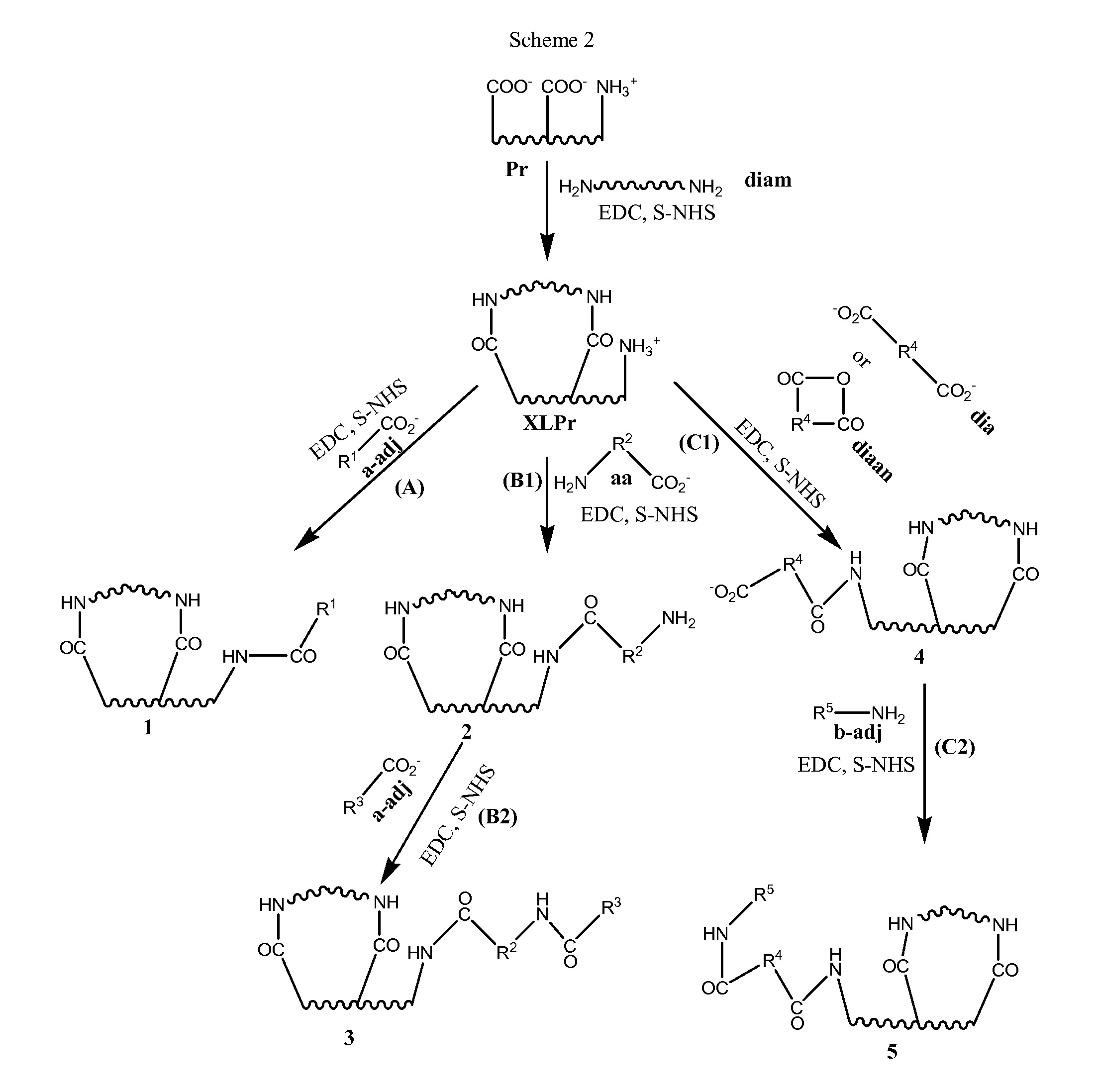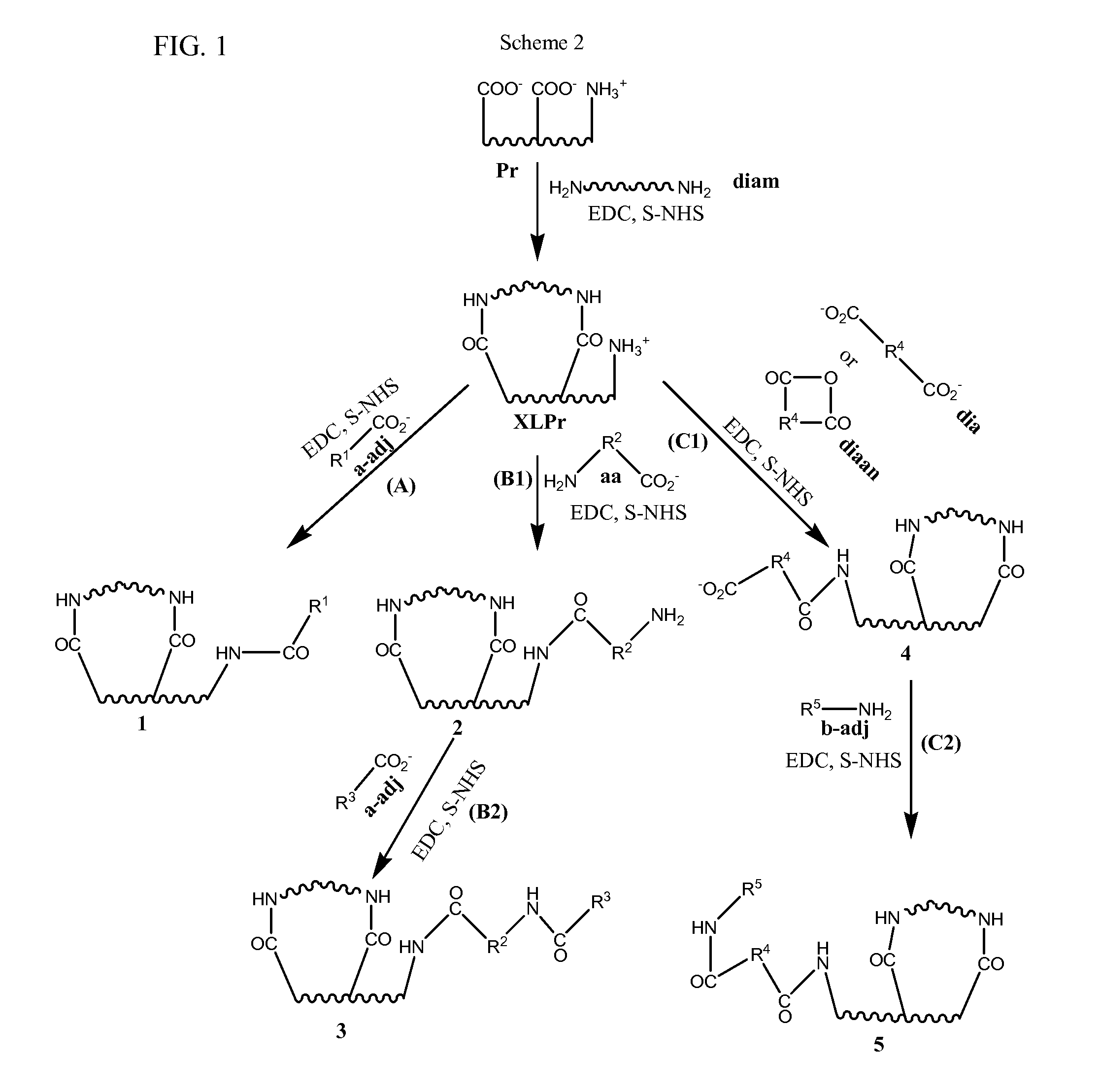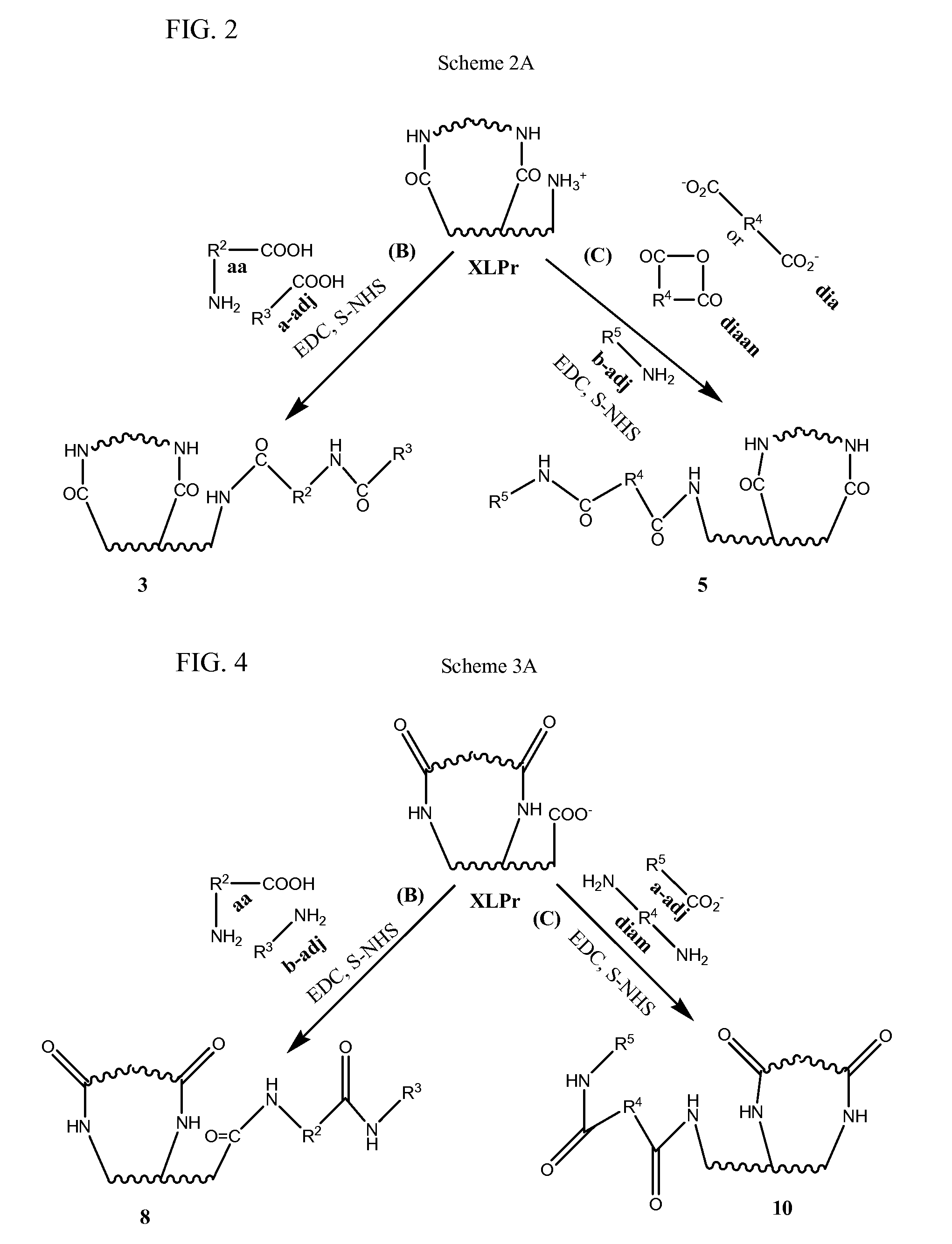Stabilized, sterilized collagen scaffolds with active adjuncts attached
a technology of stabilized and sterilized collagen and active adjuncts, which is applied in the direction of prosthesis, peptide/protein ingredients, drug compositions, etc., can solve the problems of not being able to achieve the effect of infusion method on less porous bioimplant devices such as heart valves, skin grafts, tendon, bone and ligament repair tissues, and unable to achieve diffusion release of growth factors
- Summary
- Abstract
- Description
- Claims
- Application Information
AI Technical Summary
Benefits of technology
Problems solved by technology
Method used
Image
Examples
example 1
Attachment of Glycosaminogycan to Pericardial Tissues
[0231]Pericardial tissue was stabilized (cross-linked) using the techniques defined in U.S. Pat. No. 5,447,536, and U.S. patent application Ser. No. 11 / 276,398, filed Feb. 27, 2006, each of which is expressly incorporated herein by reference in its entirety. Following the cross-linking step, pericardial tissues were exposed to a solution of the glycosaminoglycan (GAG) chondroitin sulfate (0.5%-2.0%) in the presence of EDC for defined periods of time (2 h-overnight). Tissues were subsequently rinsed, and sterilized using the methods described in U.S. Pat. Nos. 6,521,179; 6,506,339; and 5,911,951, each of which is expressly incorporated herein by reference in its entirety. The levels of GAG (glycosaminoglycan) attachment in the tissues were assessed by histological means (differential staining of sections with PAS-Alcian Blue, where GAGs stain blue, while collagen stains pink). The pictures in FIGS. 5A-5C, indicate attachment of GAG...
example 2
Evaluation of Attachment Steps
[0232]The various processing steps (cross-linking, sterilization, etc.,) were then evaluated to determine the tissue processing steps during which the adjuncts could be attached to the tissues. Specifically, this example indicates the various methods of generating a sterile tissue with stably attached adjuncts. A Type 1 collagen sponge that had been subjected to various intermediary processing steps was contacted with a solution of chondroitin sulfate (as an adjunct example) and EDC. FIGS. 6A and 6B show low- and high-magnification histological sections of GAG-attached Type 1 collagen sponge, wherein GAG-attachment was carried out during tissue sterilization. FIG. 7B shows GAG-attached Type 1 collagen sponge, wherein GAG was attached to the tissue during cross-linking. As is apparent from FIGS. 6A, 6B and 7B, attachment of GAG to collagen sponge during sterilization resulted in a diffused attachment, whereas attachment of GAG to tissue during cross-link...
example 3
Attachment of Adjuncts to Different Tissue Types
[0233]In order to demonstrate the applicability of the methods of the present invention to various collagen-based tissue types, three different tissue types were treated in accordance with the present invention. Three different tissue types (pericardium, demineralized cancellous bone, and a collagen sponge made from solubilized Type I collagen) were first cross-linked and subsequently exposed to chondroitin sulfate in the presence of EDC. Tissues were subsequently rinsed, and sterilized using the methods described in U.S. Pat. Nos. 6,521,179; 6,506,339; and 5,911,951. The levels of GAG attachment in the tissues were assessed by histological means (differential staining of sections with PAS-Alcian Blue). The pictures in FIGS. 7A and 7B indicate uniform attachment of GAGs in cancellous bone and collagen sponge tissues.
PUM
| Property | Measurement | Unit |
|---|---|---|
| reaction temperature | aaaaa | aaaaa |
| reaction temperature | aaaaa | aaaaa |
| temperature | aaaaa | aaaaa |
Abstract
Description
Claims
Application Information
 Login to View More
Login to View More - R&D
- Intellectual Property
- Life Sciences
- Materials
- Tech Scout
- Unparalleled Data Quality
- Higher Quality Content
- 60% Fewer Hallucinations
Browse by: Latest US Patents, China's latest patents, Technical Efficacy Thesaurus, Application Domain, Technology Topic, Popular Technical Reports.
© 2025 PatSnap. All rights reserved.Legal|Privacy policy|Modern Slavery Act Transparency Statement|Sitemap|About US| Contact US: help@patsnap.com



